
Guano Kaskita Simon Bolivar
Surrounded by the mist of the mountainous climate, amid coffee plantations and small streams, is Simón Bolívar School, located in the community of Guano Kaskita. Here, 112 children study, and currently there are two teachers: one for kindergarten and another covering the entire primary school.Normally, there would be three teachers: one for kindergarten, another for first and second grade, and a third for third through sixth grade. However, because one teacher became seriously ill, the other had to take over all groups. This situation makes teaching more challenging, so the children must work twice as hard to pay attention and keep up with their lessons.According to the teachers, some students come from communities up to two hours away. “Those who live nearby walk 20 minutes; those farther away, up to two hours, to get to school,” they explain.
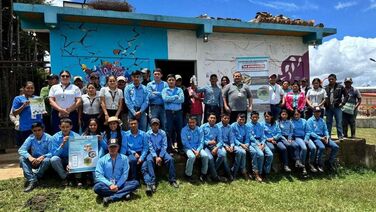
Instituto Cristina de Borbón
Location: Zacate Blanco, Yarula, La Paz, HondurasBenefited Population: 155 students & 7 teachersThis school is located in the rural municipality of Yarula and provides education for 155 high school students.
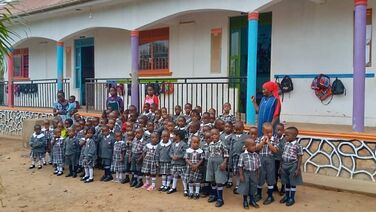
Jenna Junior School Kigoogwa
Serving 224 students in Uganda’s Muyenje community as a private day school for primary and nursery students, Jenna Junior School Kigoogwa currently relies on water from a protected dug well but continually finds its needs unmet.

Kabwinja Community Day Secondary School
Kabwinja Community Day Secondary School, located in the heart of Kabwinja Village, Dowa District, Malawi, is home to 300 students—154 girls and 146 boys—from seven surrounding villages. Despite the resilience and dedication of its students and teachers, the school faces critical challenges that hinder academic achievement, safety, and well-being because of limited access to clean water, safe sanitation, hand washing stations, and hygiene supplies.

Kassenjje Church of Uganda Primary School
Serving 722 students in Uganda’s Kasengejje community as a government-aided day school for primary and nursery students, Kassenjje Church of Uganda Primary School currently relies on water from a borehole well but continually finds its needs unmet.
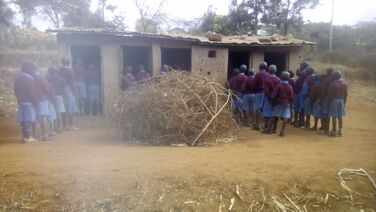
Kathungu Primary School - Boys VIP Latrines
Kathungu Primary School is a public day and boarding school located in Makueni County, Kenya. This school was started in 1974 with grass-thatched classrooms. Today, there are 316 boys and 312 girls. The school has 11 streams, which are managed by the 25 teachers with leadership from Mr. Richard Musau, the head teacher, and his deputy, Mr. Wambua Mutisya. The school performs very well both academically and in sports.The pupils in this school participate in various activities during a normal day. They are engaged in learning activities from 8:20 am to 3:10 pm. They participate in various sports during game time from 3:10 pm to 4.10 pm. There are remedial classes for the learners needing extra help from 4:10 pm to 5.00 pm.
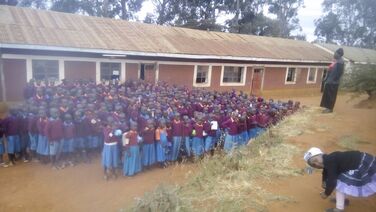
Kathungu Primary School - Water Catchment Tank
Kathungu Primary School is a public day and boarding school located in Makueni County, Kenya. This school was started in 1974 with grass-thatched classrooms. Today, there are 316 boys and 312 girls. The school has 11 streams, which are managed by the 25 teachers with leadership from Mr. Richard Musau, the head teacher, and his deputy, Mr. Wambua Mutisya. The school performs very well both academically and in sports.The pupils in this school participate in various activities during a normal day. They are engaged in learning activities from 8:20 am to 3:10 pm. They participate in various sports during game time from 3:10 pm to 4.10 pm. There are remedial classes for the learners needing extra help from 4:10 pm to 5.00 pm.
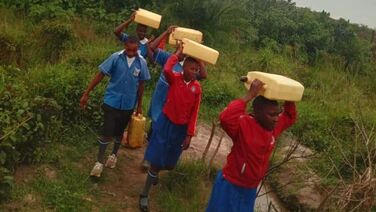
Kirungu Primary School
Kirungu Primary School is in Nakijju Village in the rural district of Gomba, Uganda.
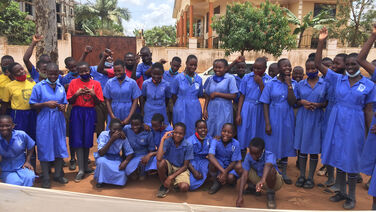
Kiteezi Church of Uganda Primary School
A government-aided primary school in Uganda, Kiteezi Church of Uganda Primary School, has 22 teachers serving 747 students across 7 classrooms.